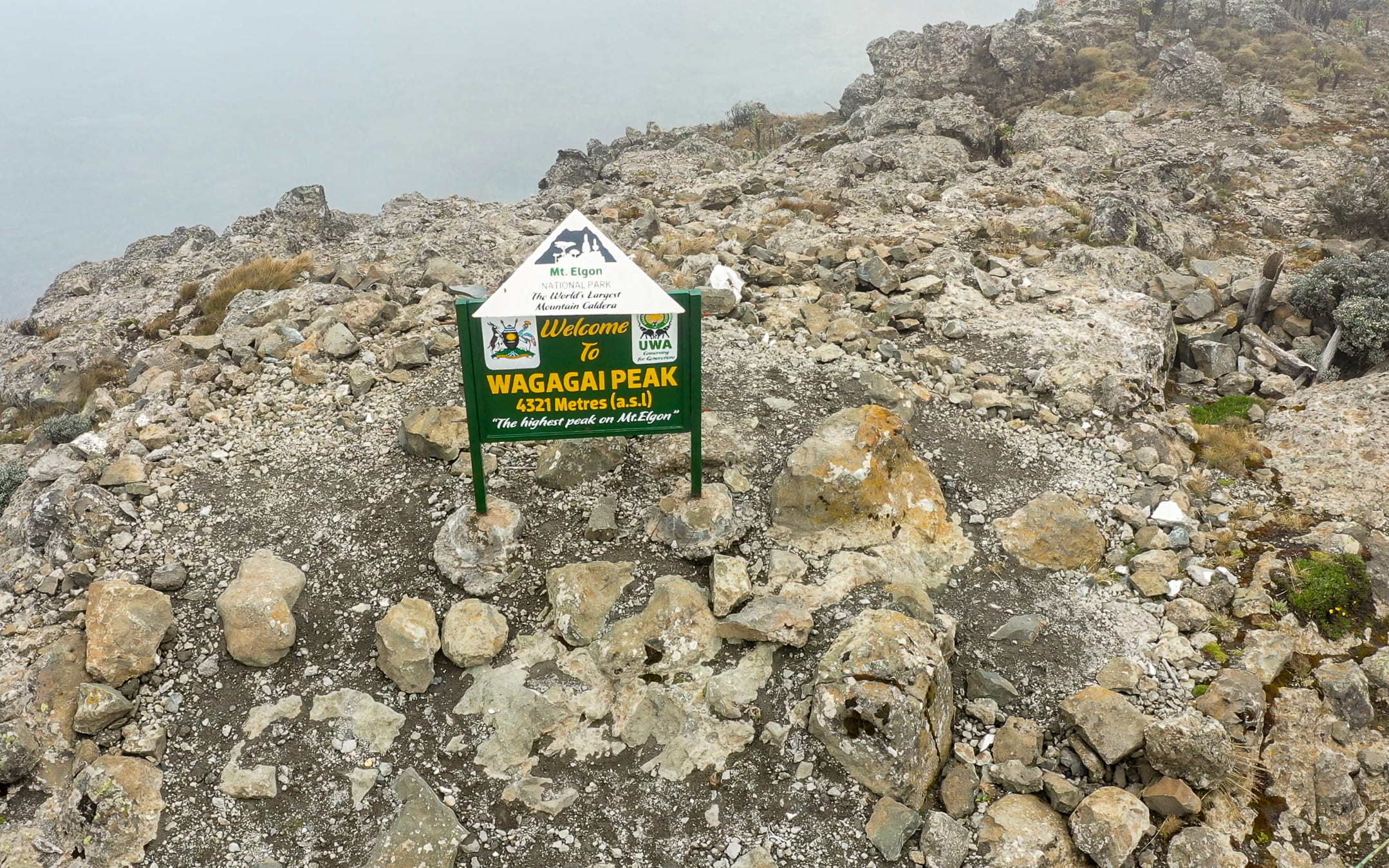
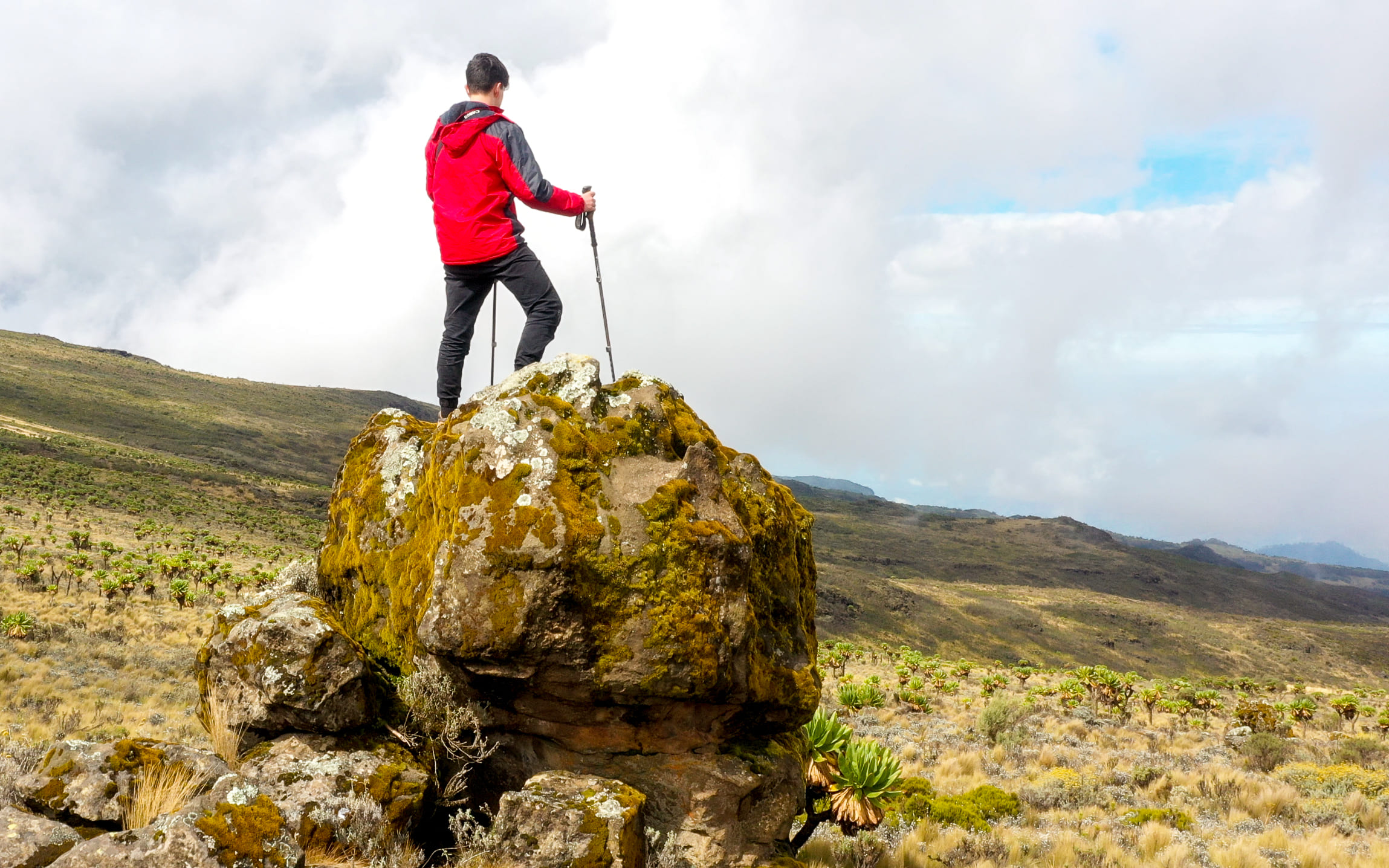
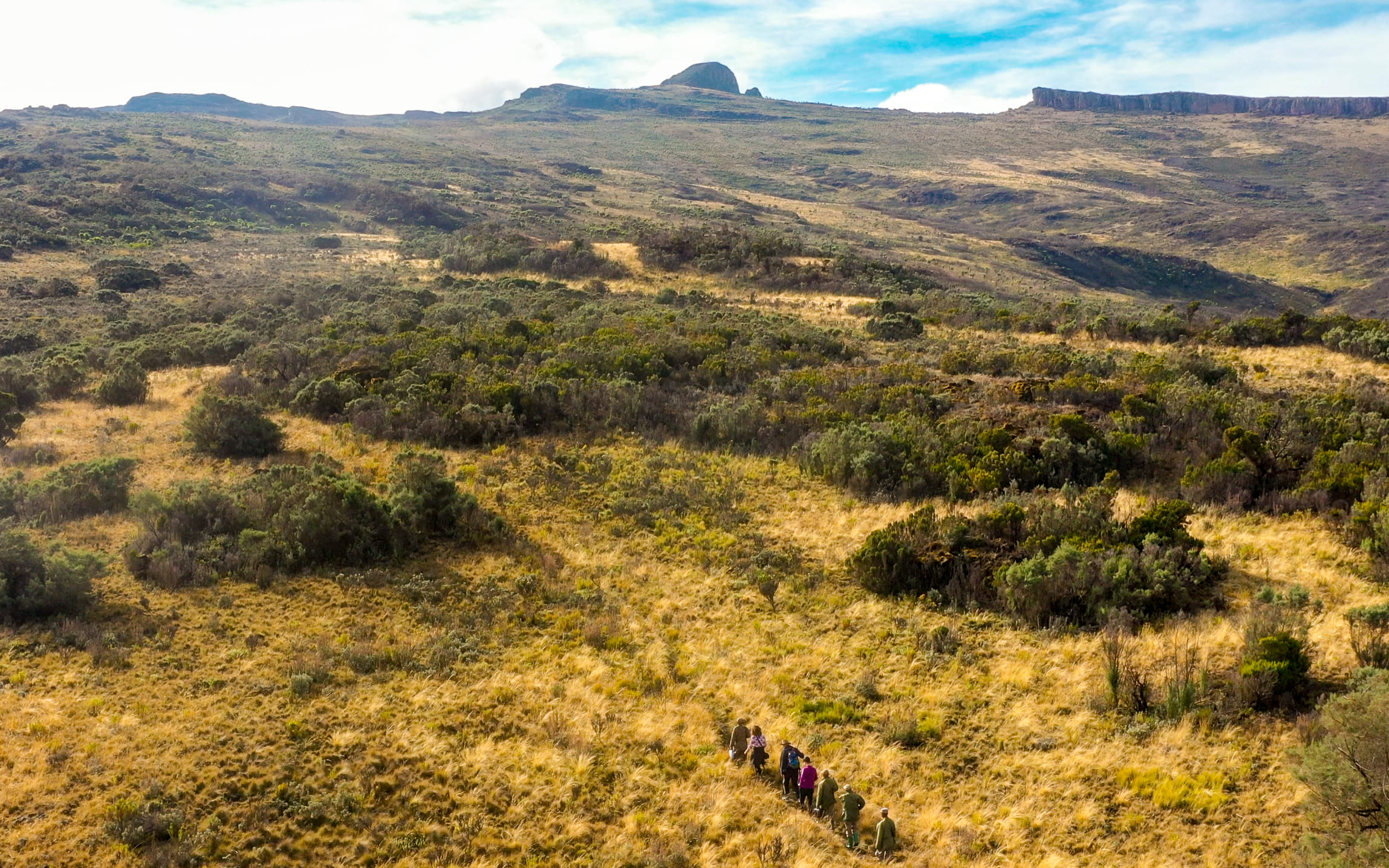

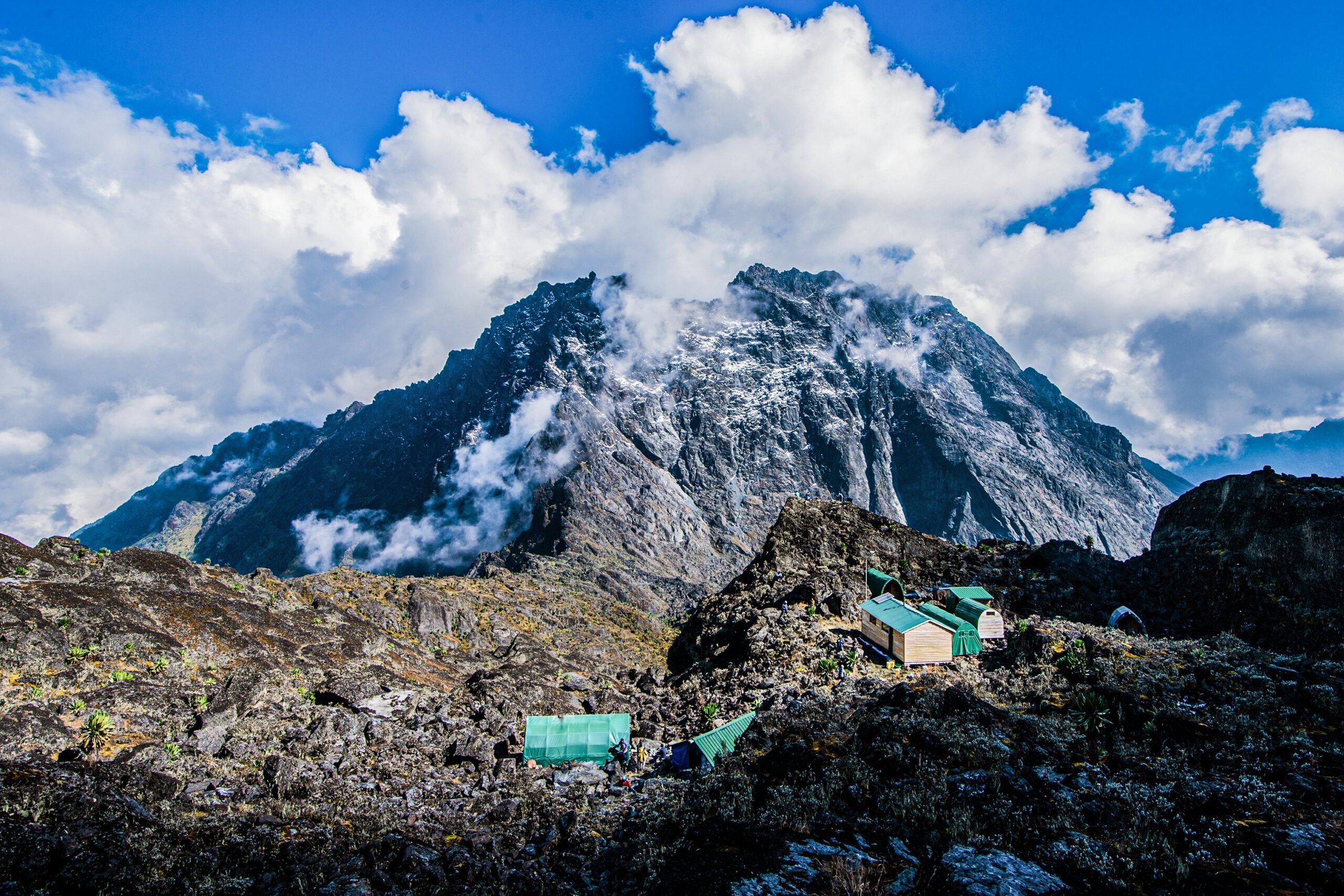
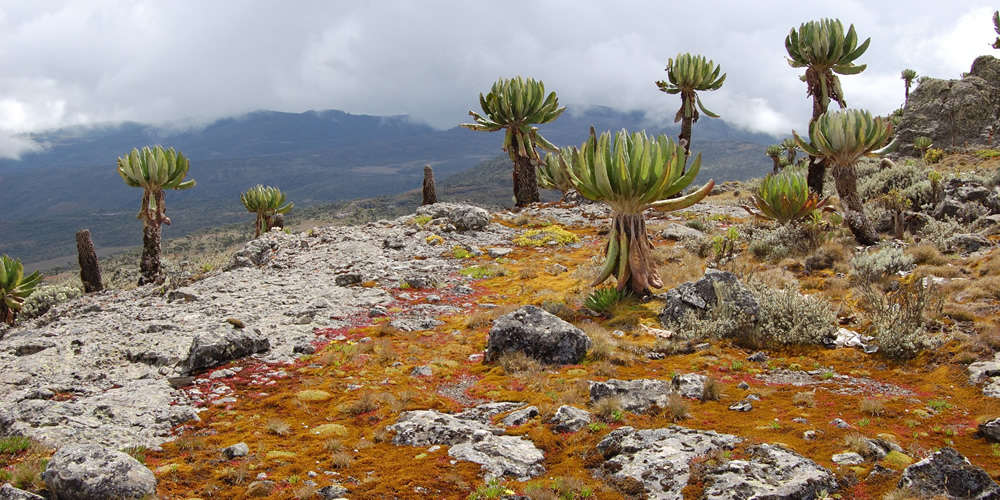
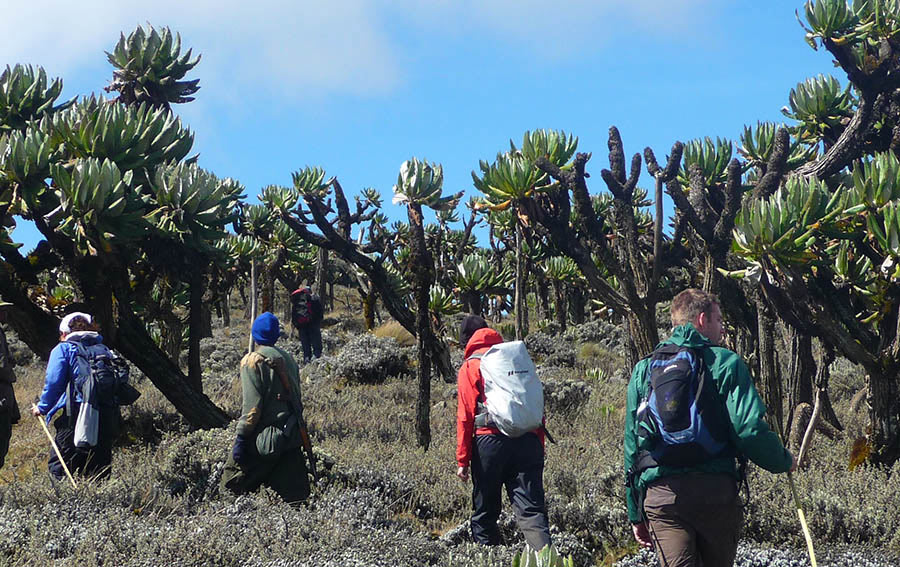
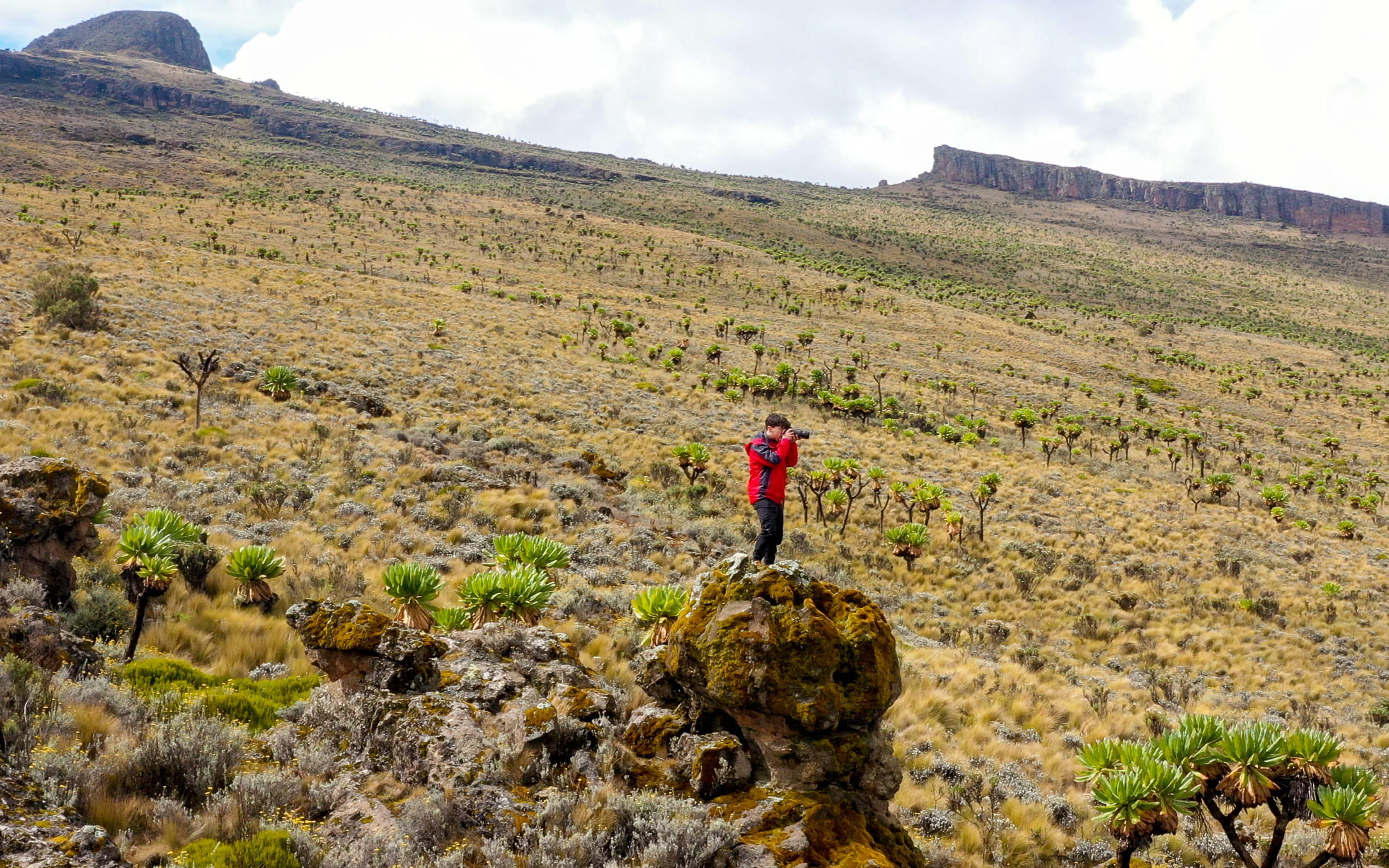
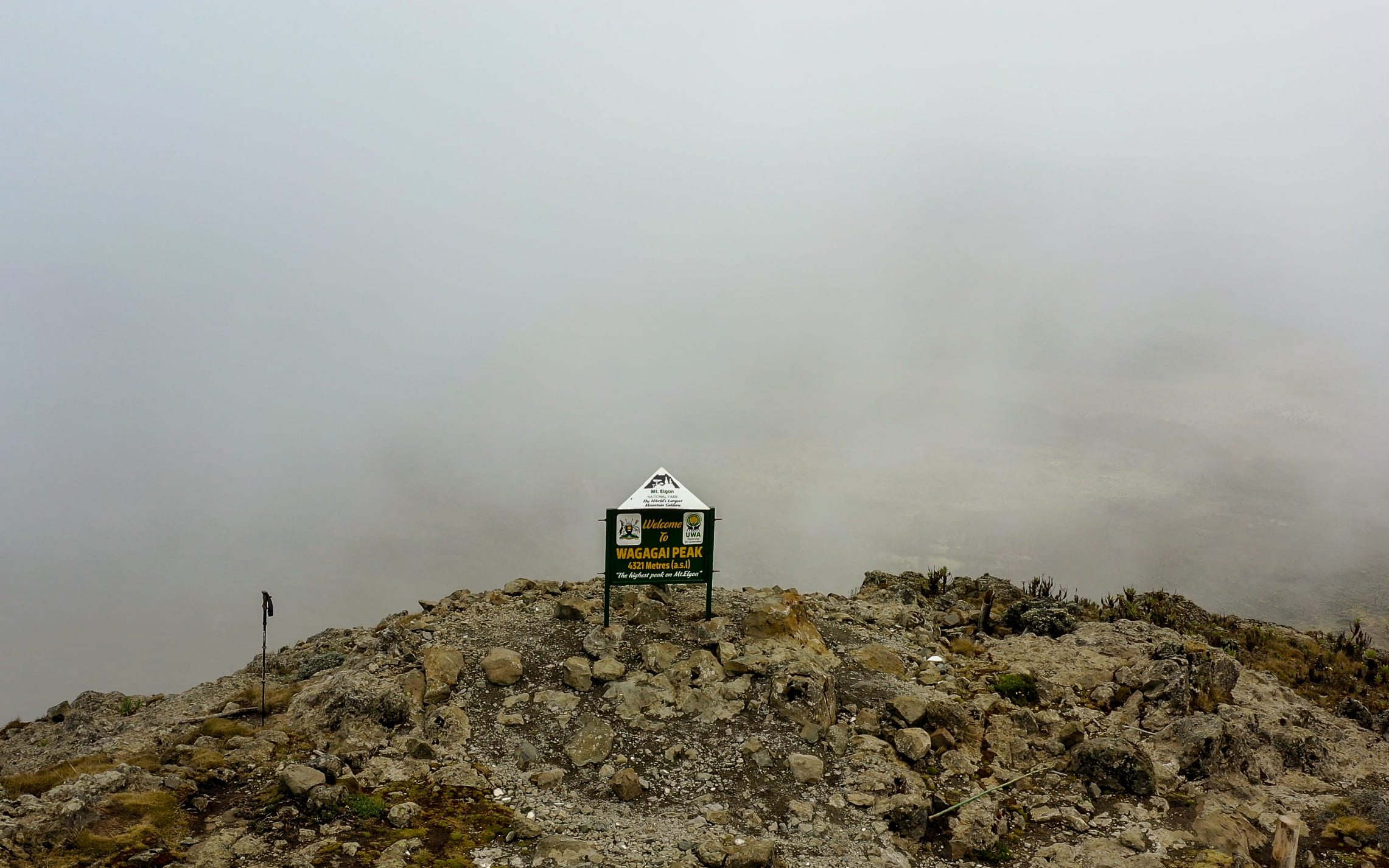
Highlights
The park is named after Mount Elgon, an extinct shield volcano on the border of Uganda and Kenya. Mount Elgon is the 4th highest mountain in Eastern Africa, reaching 4,321 metres(14,177 feet). The park covers in total an area of 1,279 km² (494 miles²) and is bisected by the border of Kenya and Uganda with the Ugandan part of the park covering 1,110 km² (429 miles²).
Mt. Elgon, deriving its name from the Maasai name of ‘Elgonyi’, has the largest volcanic base in the world and it is the oldest and largest solitary, volcanic mountain in East Africa. Its vast form – approximately 80 km (50 miles) in diameter – rises more than 3,000 m (9,843 feet) above the surrounding plains and Wagagai peak is the tallest of the 5 major peaks.
Mt. Elgon National Park is home to over 300 species of birds, including the endangered Lammergeyer. Small antelopes, forest monkeys, elephants and buffalos also live on the mountainside. The higher slopes are protected by national parks in Uganda and Kenya, creating an extensive trans-boundary conservation area which was designated a UNESCO Biosphere Reserve in 1983.
The park has magnificent waterfalls, caves, gorges and hot springs and is excellent for hiking. No technical climbing equipment or skills are required, and all major peaks are accessible to hikers. The full trekking circuit takes 4-5 days to complete and there are also 3 “day” trails, 3-7km long. The magnificent Sipi Falls are 66km north of Mbale, en route to the Forest Exploration Centre and Kapkwata.
The most popular areas are the four explorable, vast caves where frequent night visitors such as elephants and buffaloes come to lick the natural salt found on the cave walls. Kitum cave, with overhanging crystalline walls, extends 200 m into the side of Mt. Elgon.
The best times to visit Mount Elgon are between May and September and between November and December.
